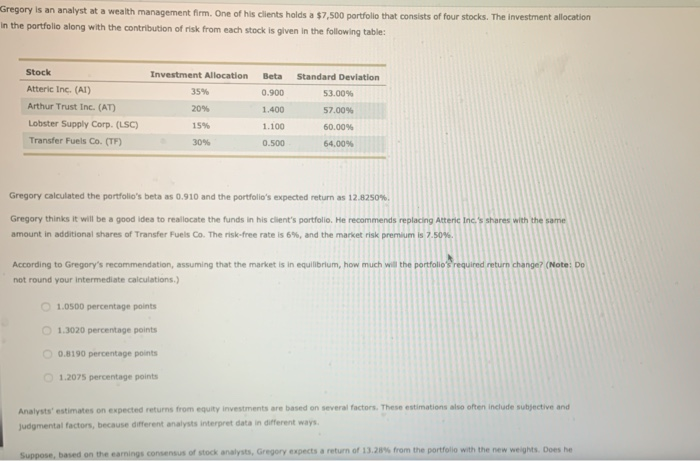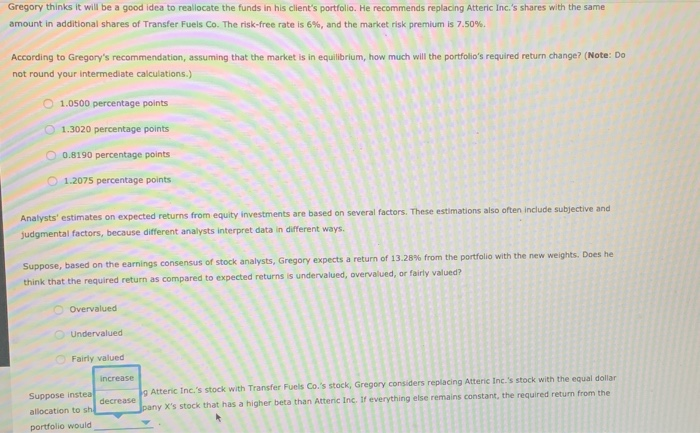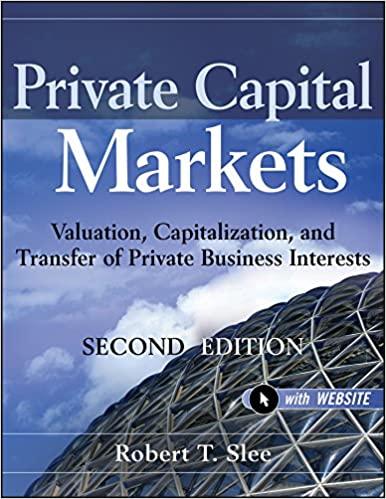Gregory is an analyst at a wealth management firm. One of his clients holds a $7,500 portfolio that consists of four stocks. The investment allocation in the portfolio along with the contribution of risk from each stock is given in the following table: Stock Atteric Inc. (AI) Arthur Trust Inc. (AT) Lobster Supply Corp. (LSC) Transfer Fuels Co. (TF) Investment Allocation 35% 20% 15% 30% Beta 0.900 1.400 1.100 Standard Deviation 53.00% 57.00% 60.00% 64.00% 0.500 Gregory calculated the portfolio's beta as 0.910 and the portfolio's expected return as 12.8250%. Gregory thinks it will be a good idea to reallocate the funds in his client's portfolio. He recommends replacing Atterie Inc.'s shares with the same amount in additional shares of Transfer Fuels Co. The risk-free rate is 6%, and the market risk premium is 7.50%. According to Gregory's recommendation, assuming that the market is in equilibrium, how much will the portfolio's required return change? (Note: Do not round your intermediate calculations.) 1.0500 percentage points 1.3020 percentage points 0.8190 percentage points 1.2075 percentage points Analysts'estimates on expected returns from equity investments are based on several factors. These estimations also often include subjective and Judgmental factors, because different analysts interpret data in different ways. Suppose, based on the earnings consensus of stock analysts, Gregory expects a return of 13.28% from the portfolio with the new weights. Does he Gregory thinks it will be a good idea to reallocate the funds in his client's portfolio. He recommends replacing Atteric Inc.'s shares with the same amount in additional shares of Transfer Fuels Co. The risk-free rate is 6%, and the market risk premium is 7.50%. According to Gregory's recommendation, assuming that the market is in equilibrium, how much will the portfolio's required return change? (Note: Do not round your intermediate calculations.) 1.0500 percentage points 1.3020 percentage points 0.8190 percentage points 1.2075 percentage points Analysts' estimates on expected returns from equity investments are based on judgmental factors, because different analysts interpret data in different ways. Suppose, based on the earnings consensus of stock analysts, Gregory expects a return of 13.28% from think that the required return as compared to expected returns is undervalued overvalued Overvalued Undervalued Fairly valued increase replacing Atteric Inc.'s stock with the equal dollar constant, the required return from the Suppose inste 9 Atteric Inc.'s stock with Transfer pany X's stock that has a higher beta decrease allocation to sh portfolio would








